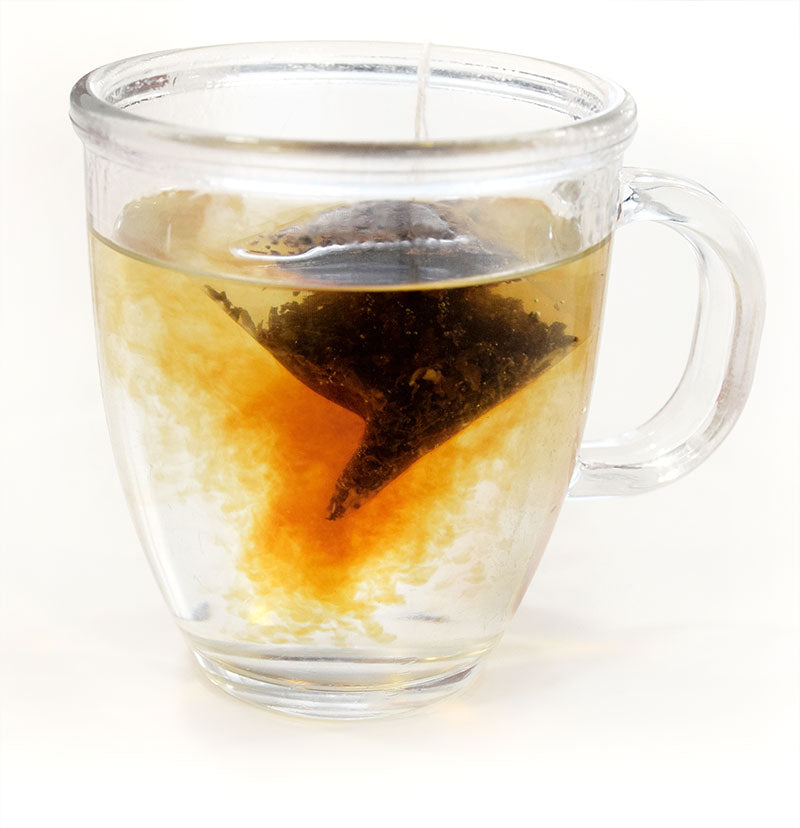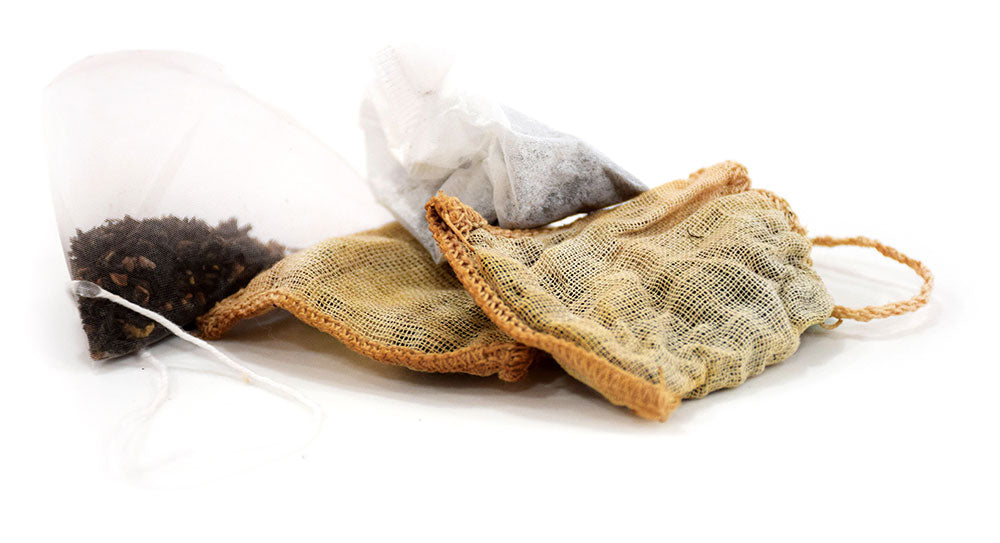Tackling Plastic - Where is the Green in Tea Bags?

Did you know an estimated 165 million cups of tea are drunk in the UK every day and 96% of those are made using a bag?
Tea is one of the most popular drinks in the UK however many were shocked to hear that the humble (but useful) tea bag often contains plastic. Given that tea bags are arguably an avoidable type of food waste, a growing question is what can we do with these tea bags once they’ve been used; can they be composted or should we throw them away?
Can You Compost Tea Bags?
Theoretically, yes you can compost tea bags. The UK government’s anti-waste advisory group WRAP suggests that tea bags are suitable for home composting and that if any parts of the tea bag are still visible in the end compost, they can simply be removed by hand or sieved out to be returned back into the compost bin. Is it really this easy though? For the seasoned gardeners amongst us, many of us will have tried composting these little netted pyramids or circles only to find a couple of months (or years) later, the empty partially composted nets floating within our lovely, crumbly compost.
What is a Compost Tea Bag Net?
For many the nets pose a concern regarding finding potential contamination within compost. So why are we encouraged to compost tea bags if they do they not break down fully? Well, like most items, it comes down to how they are made. In the UK, a large percentage of domestic tea bags are made from 70-80% paper, so you’d think this wouldn’t be much of a problem, after all we can add paper into the compost bin without any issues. It turns out however that many tea bags sold in the UK also contain a varying quantity of polypropylene (a type of plastic) which is used to help seal the bag shut; some brands also use food grade polypropylene to help reinforce the paper fibres of the bag. It is these bits of plastic that prevent many tea bags from breaking down fully and which end up as little nets in our compost.
Where is the Green in Tea? Is Any Tea Bag Plastic Free?
Selection of Tea Bags With mounting awareness regarding the inclusion of plastics in domestic items such as tea bags and cosmetic products, pressure is increasingly being placed on manufacturers to look at ways to reduce the use of plastics. Large corporations and even the Royal Estate have plans to phase out or immediately discontinue the use of single-use plastics within their operations for example replacing plastic straws with paper based ones. Some tea bags are seen as another form of plastic pollution and even if you decide not to add them to your compost pile it is still not going to aid the battle against microplastics. Admittedly some companies have already made the move towards using more environmentally friendly types of tea bags such as those made from silk or vegetable based pulp and sealed with cotton based stitching. These tea bags although more expensive, have been found to compost well, leaving very little or no trace in the end compost.
What About Tea Bag Packaging?
If you are purchasing a box of branded household favourite tea bags the box can also be recycled or shredded and added into the HOTBIN.

However what about those tea bags that come in neat little sachets? Even though the tea bag tags are compostable (having used vegetable based printing inks), the sachets are often unfortunately made from plastic and/or foil. This frustratingly means it is possible to end up with a tea bag that is completely compostable but is wrapped in a non-compostable/recyclable sachet and then finally packaged in a recyclable/compostable cardboard box.
Lovely White Tea Bags, But at a Cost?
A further concern for organic gardeners is that many tea bags undergo a chemical treatment in the form of bag strengthening and/or a bleaching/chlorination process which turns the paper fibres from the natural untreated brown colour to the white we have come to commonly associate with our tea bags. Is this process leaching chemicals into the surrounding area? Arguably this process only seems necessary for the purposes of beautifying the tea bag for consumers, a situation reminiscent of the “ugly fruit and veg” campaign. Although now popular these fruit and vegetables were once shunned by some supermarkets seeking only the best looking produce for their shelves which in turn begs the question if the treatment of tea bags is really necessary.
How to Compost Tea Bags in the HOTBIN
As the consumer and gardener, should we compost tea bags at home, dispose of them in our municipal waste or do we look at changing our tea drinking habits once and for all? If you would like to compost your ‘normal’ tea bags at home in the HOTBIN, there are a couple of things you can do to help improve the process.
- Find out what types of tea bag you have.
- Squeeze out as much of the excess moisture from them as possible, this prevents additional moisture from entering the HOTBIN and saturating the current contents.
- Cut a couple of holes into the tea bag – this will give the hot composting bacteria better access into the tea bag and accelerate its rate of decomposition. These can then be added into your kitchen caddy to be added into the compost bin with your next ‘feed’. Alternatively, if you would rather not add the tea bag itself, you could empty the tea residue from the tea bag into your caddy and put the empty bag into the household rubbish bin.
Time to Turn Over a New Tea Leaf?
Why not consider re-usable muslin tea bags, 100% biodegradable silk or banana pulp based tea bags or perhaps switch to loose leaf tea which despite its lack of convenience some argue makes for a better cup of tea anyway! Loose tea leaves can then be added straight from the mug or pot (after a quick squeeze) and eliminate both the plastic and bleaching concerns as well as breaking down quicker and more efficiently. Now to put our feet up with a fresh loose leaf brew…




